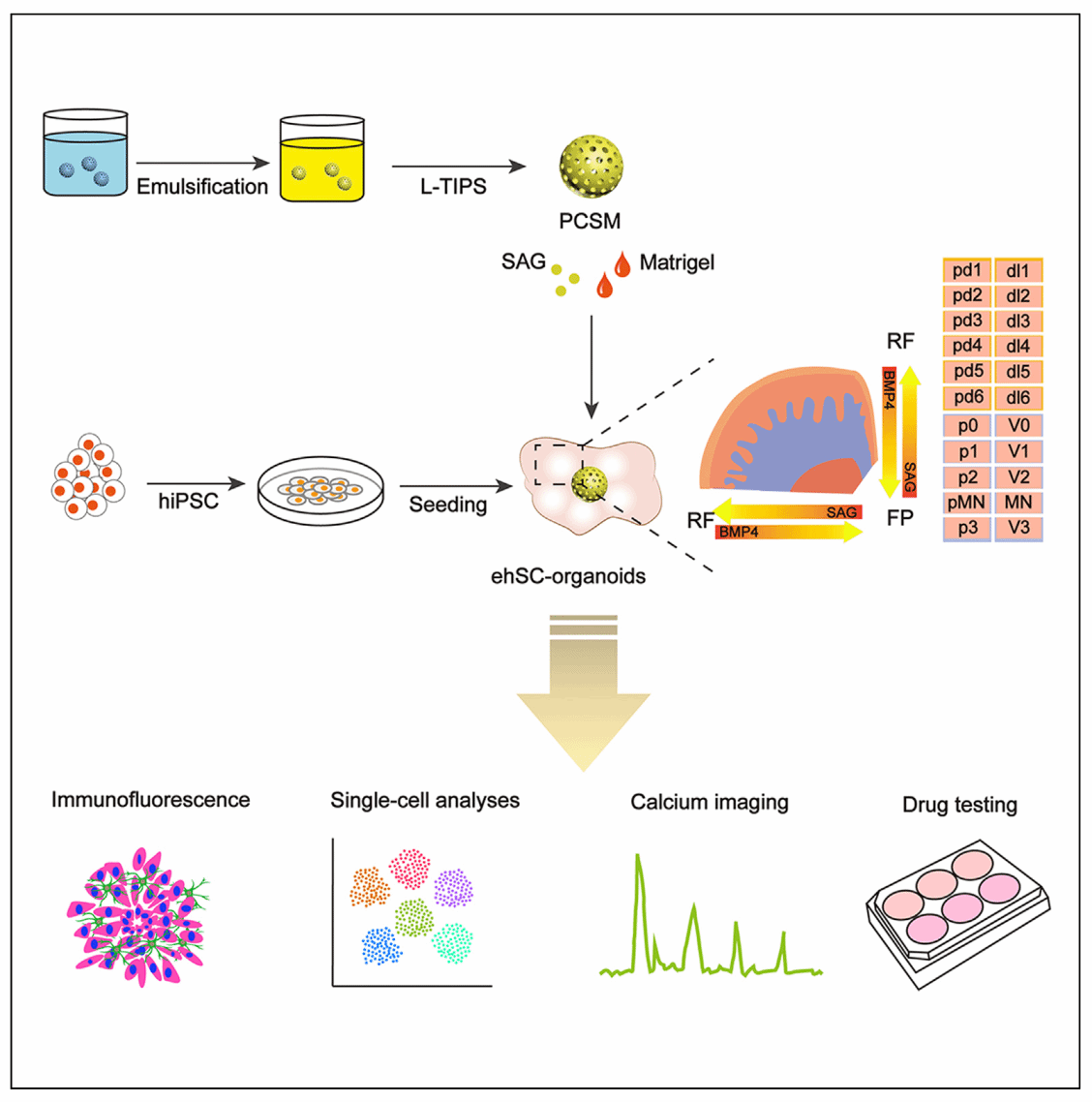
In this study, Shh agonists (SAG) for ventral signal of spinal cord development was loaded into porous chitosan microspheres (PCSM) and coated with heat-sensitive Matrigel on the surface to form a complex microsphere with sustainer-release SAG function, known as PCSM-Matrigel@SAG. Using PCSM-Matrigel@SAG as the core, Human induced pluripotent stem cells (hiPSCs) were directed to form spinal cord organoids (ehSC-organoids). ehSC-organoids can form dorsoventral cell structures of the spinal cord and have the cellular characteristics of progenitor cells and neurons in the main dorsoventral domain. Meanwhile, ehSC-organoids have calcium functional activity and can be used as a pathological research model for oxidative stress in amyotrophic lateral sclerosis (ALS) to test the antioxidant stress effect of Edaravone. ehSC-organoids have important application prospects in the research of spinal cord development, 3D motor neuron disease models and drug screening, as well as the spinal cord injury repair.